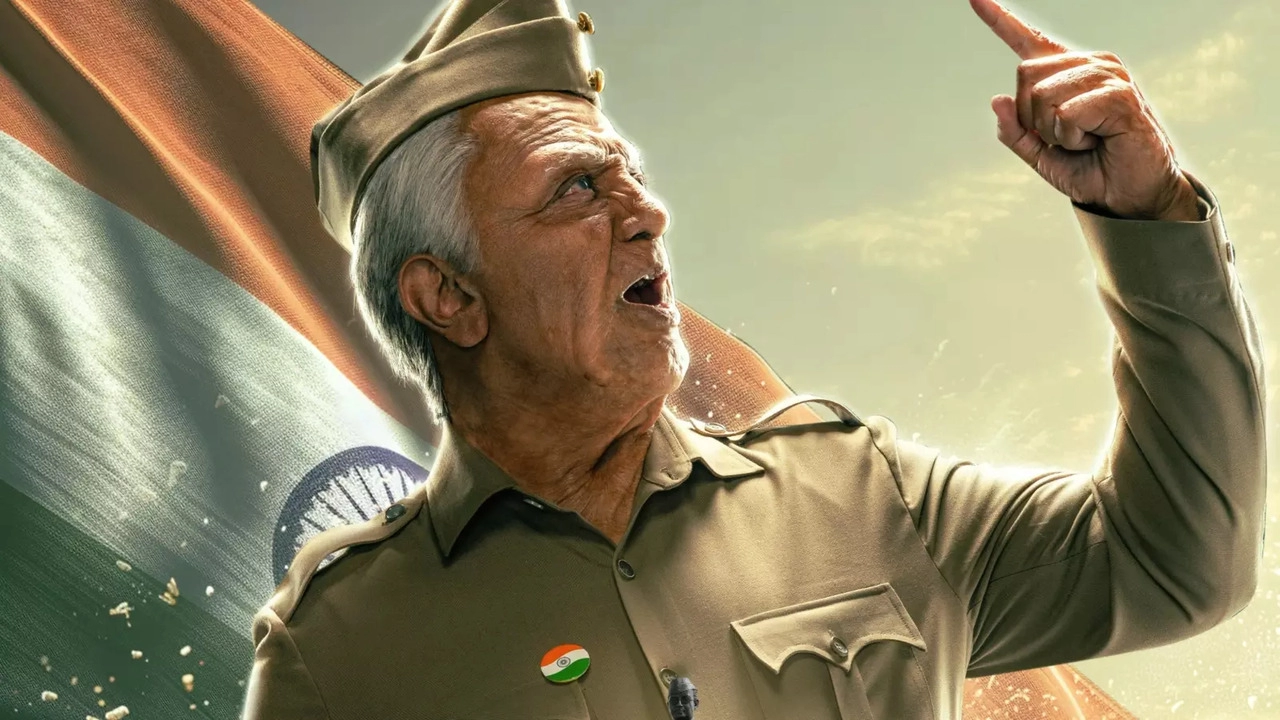Why Did Shankar Bring Back the Character of Senapathy in “Indian 2”?
The Dramatic Return of Senapathy: Shankar’s Bold Yet Flawed Sequel
Shankar Bring Back Senapathy in ‘Indian 2’

The return of Senapathy in “Indian 2” has been one of the most anticipated events in Indian cinema. Directed by S. Shankar, “Indian 2” (also known as “Bharateeyudu 2”) brings back Kamal Haasan in his iconic role as the ex-freedom fighter turned vigilante. The original “Indian” film, released in 1996, was a landmark in Indian cinema, celebrated for its strong social message against corruption and Haasan’s powerful performance. The sequel, “Indian 2,” revisits these themes, attempting to address contemporary issues while retaining the essence of the original. This article explores why Shankar decided to revive the character of Senapathy and the broader implications of his return in “Indian 2.”
The Legacy of “Indian”
Before delving into the reasons behind Senapathy’s return, it is essential to understand the impact of the original “Indian.” Released in 1996, “Indian” was a critical and commercial success, known for its compelling narrative, strong performances, and Shankar’s directorial prowess. The film told the story of Senapathy, a freedom fighter who becomes a vigilante to fight against corruption in post-independence India. Kamal Haasan’s portrayal of Senapathy, particularly the dual roles of father and son, was widely acclaimed. The film’s strong social message resonated with audiences, making it a timeless classic.
Reviving a Cultural Icon
One of the primary reasons Shankar brought back Senapathy in “Indian 2” is the character’s enduring legacy. Senapathy became a cultural icon, representing the fight against corruption and injustice. In a country where corruption continues to be a significant issue, the character’s return provides an opportunity to address these persistent problems through a familiar and beloved figure. By reviving Senapathy, Shankar aims to tap into the collective memory of the audience, invoking the same sense of justice and moral righteousness that the original film inspired.
Addressing Contemporary Issues
The India of 2023, when “Indian 2” was released, is markedly different from the India of 1996. While the country has made significant strides in various sectors, corruption remains a pervasive issue. Shankar recognized the need to update the narrative to reflect contemporary realities. In “Indian 2,” Senapathy returns to tackle modern-day corruption, which has evolved with technology and globalization. The sequel explores new dimensions of corruption, such as cybercrime, political scandals, and corporate malfeasance. By bringing Senapathy back, Shankar seeks to highlight these issues and provoke thought and discussion among the audience.
Senapathy’s Evolution
In “Indian 2,” Senapathy is not just a vigilante from the past but a character who has evolved with time. Shankar’s portrayal of Senapathy in the sequel reflects this evolution. The character’s motivations, methods, and challenges are updated to resonate with contemporary audiences. Senapathy’s return is not just about fighting corruption; it is also about navigating a complex and rapidly changing world. This evolution makes Senapathy’s character more relatable and relevant to today’s audience.
A New Generation of Viewers
Another crucial factor behind Senapathy’s return is the opportunity to introduce the character to a new generation of viewers. Many younger audiences may not have seen the original “Indian” and are unfamiliar with Senapathy’s legacy. By bringing back this iconic character, Shankar aims to bridge the generational gap, allowing new viewers to connect with the powerful themes of justice and anti-corruption that Senapathy embodies. This approach not only revitalizes interest in the original film but also ensures that its message remains relevant for future generations.
The Appeal of Kamal Haasan
Kamal Haasan’s portrayal of Senapathy was one of the key reasons for the original film’s success. His return in “Indian 2” is a significant draw for fans and a testament to his enduring appeal as an actor. Haasan’s ability to bring depth, nuance, and intensity to his roles ensures that Senapathy’s character remains compelling and impactful. For Shankar, having Haasan reprise his role adds a layer of authenticity and continuity to the sequel. Haasan’s presence not only attracts audiences but also lends credibility to the film’s narrative.
Exploring the Consequences of Vigilantism
In “Indian 2,” Shankar delves deeper into the consequences of vigilantism. While the original film celebrated Senapathy’s fight against corruption, the sequel explores the darker side of his actions. Senapathy’s return is met with mixed reactions from the public, and he becomes a target of hatred and controversy. This narrative choice allows Shankar to examine the complexities and ethical dilemmas associated with taking the law into one’s own hands. By showing the consequences of Senapathy’s vigilantism, Shankar adds depth to the character and the overall story, making it more thought-provoking and nuanced.
Technological Advancements in Filmmaking
The advancements in filmmaking technology since 1996 have enabled Shankar to create a visually stunning and technically sophisticated film. “Indian 2” benefits from state-of-the-art visual effects, cinematography, and production design, which enhance the storytelling experience. These technological advancements allow Shankar to bring Senapathy’s world to life in ways that were not possible in the original film. The use of modern technology not only elevates the film’s aesthetic appeal but also makes the narrative more engaging and immersive for the audience.
Thematic Continuity and Innovation
While “Indian 2” introduces new themes and challenges, it also maintains thematic continuity with the original film. The core message of fighting corruption and standing up for justice remains central to the sequel. However, Shankar innovatively explores these themes through different perspectives and contemporary contexts. For instance, the film addresses the role of social media and digital platforms in exposing corruption, reflecting the changing landscape of activism and public discourse. This blend of continuity and innovation ensures that “Indian 2” stays true to its roots while offering fresh insights and perspectives.
Cultural and Social Impact
The impact of films like “Indian” and “Indian 2” extends beyond entertainment. These films have the power to influence public opinion, spark debates, and inspire action. By bringing back Senapathy, Shankar aims to reignite the conversation about corruption and social justice in India. The film encourages viewers to reflect on their own roles in combating corruption and promotes a sense of collective responsibility. This cultural and social impact is a testament to the power of cinema as a tool for change.
Challenges and Criticisms
Despite its many strengths, “Indian 2” is not without its challenges and criticisms. Some viewers and critics have pointed out the film’s pacing issues, fragmented narrative, and underdeveloped characters. The portrayal of Senapathy, while powerful, is sometimes marred by questionable makeup and costumes. Additionally, the film’s attempt to address contemporary issues is seen by some as superficial and lacking in depth. These criticisms highlight the difficulties of creating a sequel that lives up to the legacy of its predecessor while addressing the expectations of a modern audience. Just as we know Why is the Sequel to “Gladiator II” Highly Anticipated?
Conclusion
The return of Senapathy in “Indian 2” is a bold and ambitious move by S. Shankar. By reviving this iconic character, Shankar seeks to address contemporary issues of corruption and injustice while maintaining thematic continuity with the original film. The evolution of Senapathy’s character, the appeal of Kamal Haasan, and the advancements in filmmaking technology all contribute to making “Indian 2” a compelling cinematic experience. Despite its challenges and criticisms, the film’s impact on public discourse and its potential to inspire change cannot be understated. “Indian 2” serves as a reminder of the enduring power of cinema to reflect society’s struggles, provoke thought, and inspire action.




